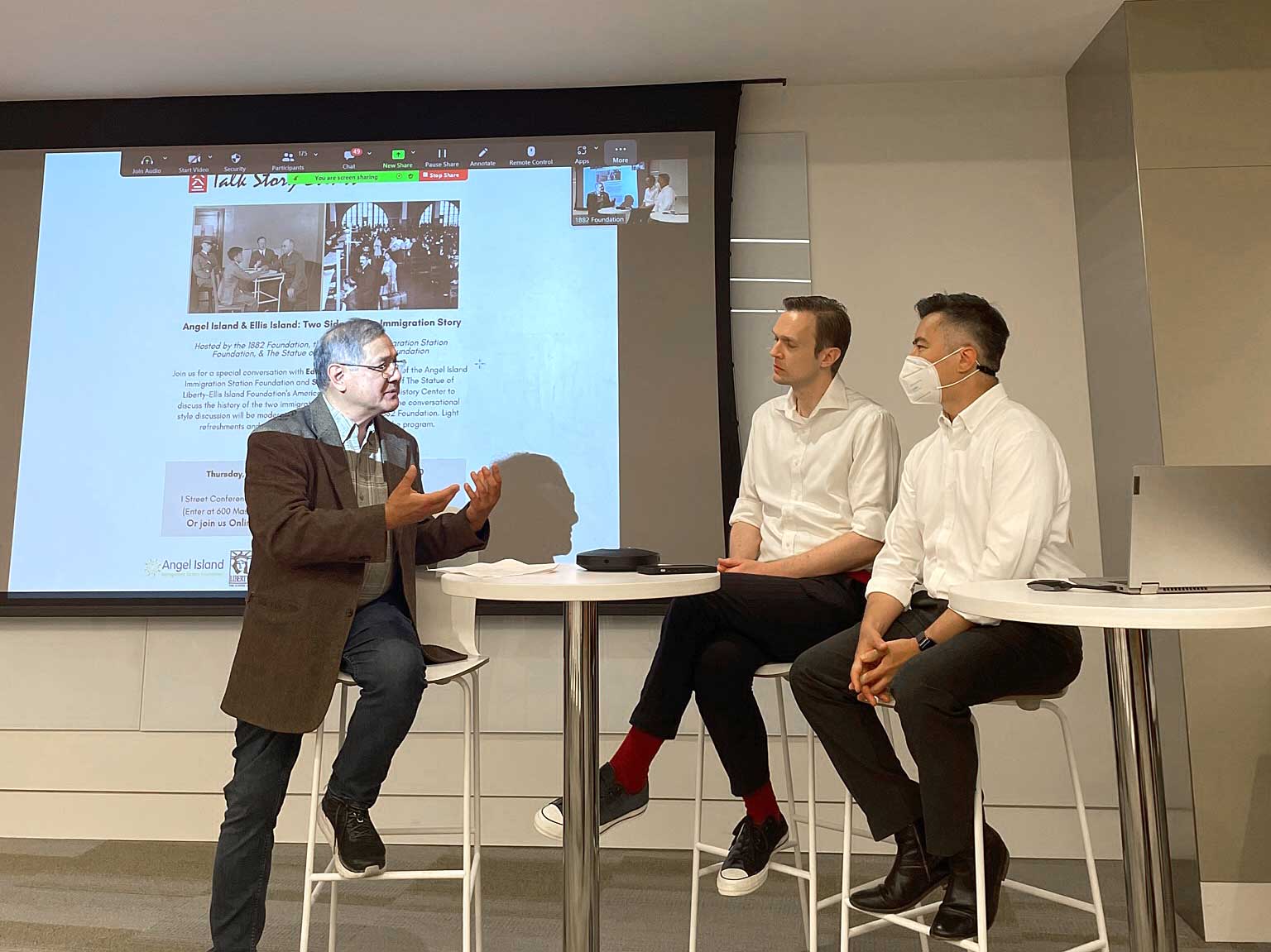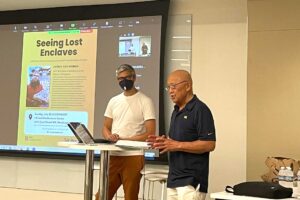The 1882 Foundation hosted a joint discussion with Edward Tepporn, director of Angel Island Immigration Station Foundation, and Stephen Lean, director of The Statue of Liberty-Ellis Island Foundation’s American Family Immigration History Center, at the I Street Conference Center on Sunday, June 28.
Addressing over 200 in-person and Zoom attendees, Tepporn and Lean shared the history of their respective immigration processing centers, addressing the operations, roles, and common misconceptions of each. They highlighted notable moments in immigration history, such as the Immigration Act of 1917, Emergency Quota Act of 1921, and National Origins Act of 1924. In addition, they discussed current operations at each museum center.
According to Lean, Ellis Island—noted for welcoming the tired and poor—processed about 12 million immigrants when it was in operation. Many immigrants identified as Italian, Jewish, German, or Polish, but there were also a number of people from Pacific Islander, Indian, Korean, and Turkish backgrounds. Initially, most people were processed within a few days, but detention times became longer from the 1920s to 1954, reflecting a political climate more hostile to immigration.
Tepporn said that Angel Island, at its core, was a detention center. About 1 million people were processed in total: 500,000 on their way in, and 500,000 on their way out. The length of detention depended on the person’s country of origin; the standard time was a couple of days, but the Chinese were often detained for a few months, or even up to two years.
The event ended with a Q&A moderated by 1882 Foundation Executive Director Ted Gong. Audience members asked about the idea of the United States as a “nation of immigrants,” using Ellis Island and Angel Island for genealogy research, experiences of immigrants once they had passed through Ellis Island or Angel Island, and more.
The entire event recording is available below:
Special thanks to speakers Edward Tepporn and Stephen Lean, 1882 Foundation staff, and I Street Conference Center staff for their help and support.


